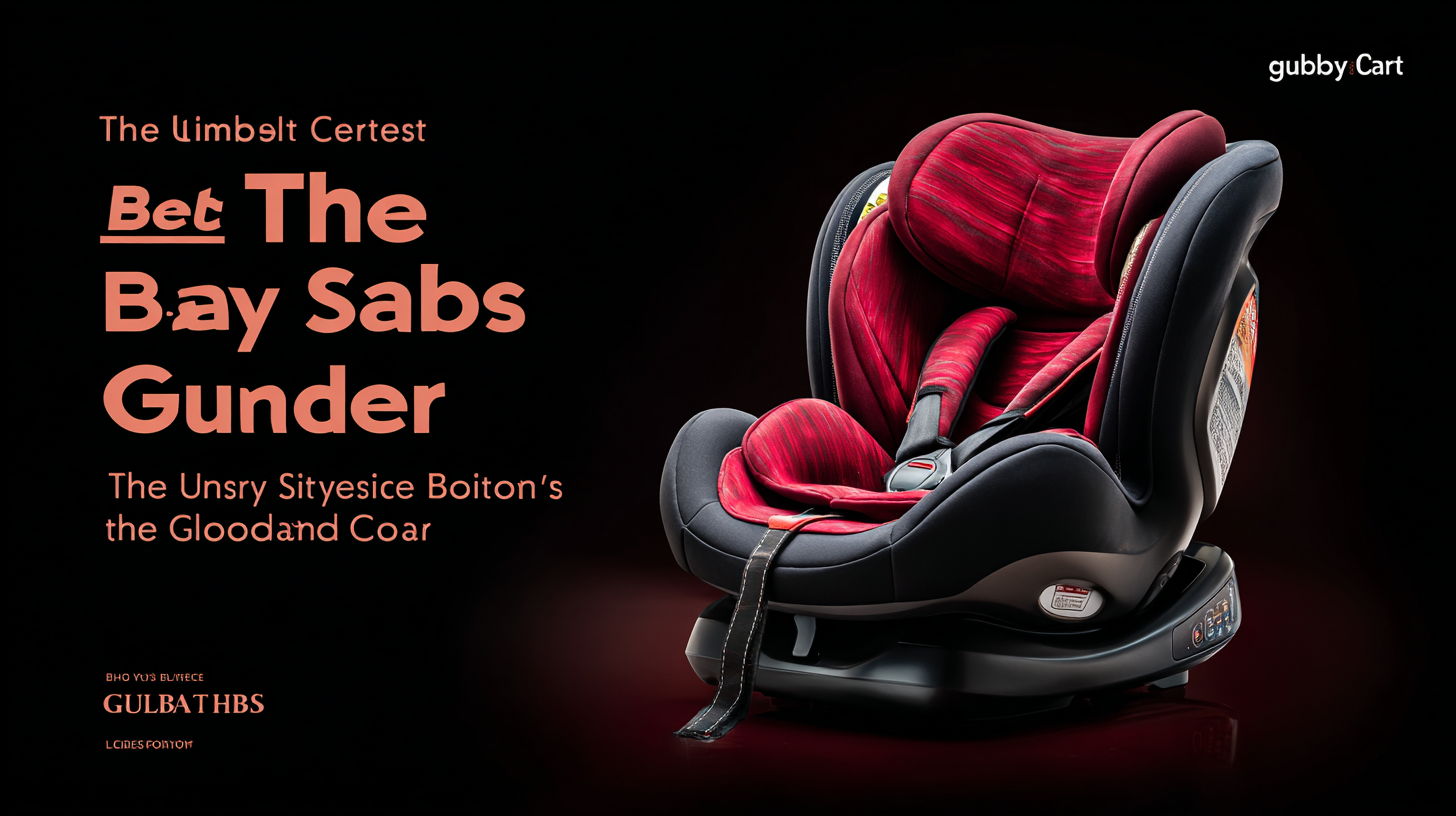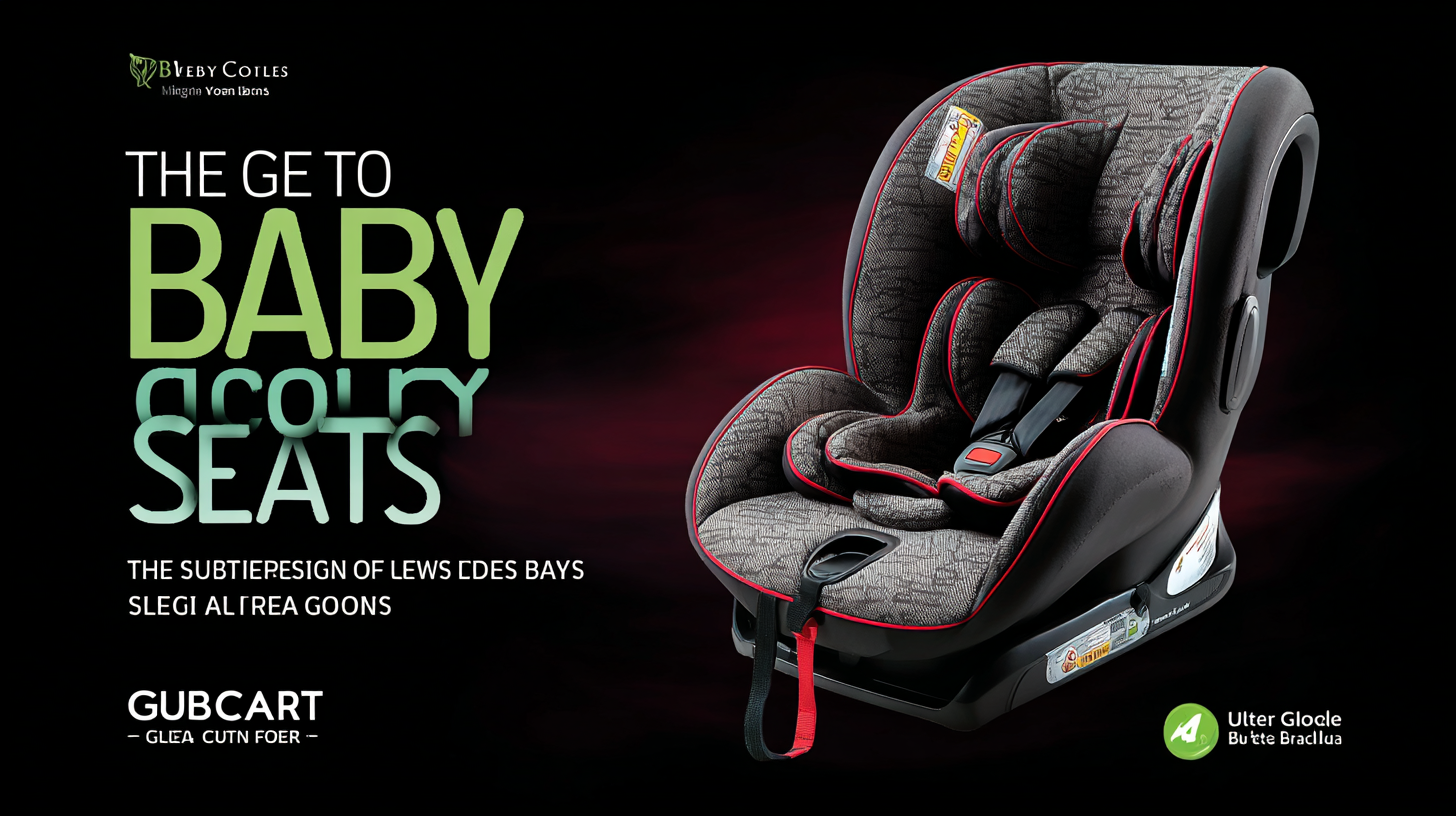When it comes to ensuring the safety and comfort of your little one during travel, selecting the right Baby Car Seats is paramount. With a multitude of options available in the market, choosing the best one can become a daunting task for global buyers. This Ultimate Guide is designed to simplify the decision-making process by providing comprehensive technical specifications of various Baby Car Seats, along with insightful "How to" tips on what to look for when making your selection. Whether you're a first-time parent or looking to upgrade your existing seat, understanding the key features, safety ratings, and usability factors will empower you to make an informed choice that suits your family's unique needs. Join us as we delve into the essential aspects of Baby Car Seats to ensure your child's safety on the road.

When selecting a baby car seat, understanding the different types available in the market is crucial for ensuring your child's safety. The three main types of car seats are infant car seats, convertible car seats, and booster seats. According to the National Highway Traffic Safety Administration (NHTSA), infant car seats are designed for infants up to 30-35 pounds and typically feature a carrier that can be easily moved in and out of the car. Convertible car seats, on the other hand, can be used in both rear-facing and forward-facing positions and accommodate children from birth up to a weight limit of around 65 pounds, making them a long-term investment.
**Tips**: When choosing a car seat, always check for the latest safety ratings from organizations like the Insurance Institute for Highway Safety (IIHS). Opt for a model that fits well in your car and is compatible with your lifestyle, especially if you travel frequently.
Booster seats are designed for older children who have outgrown their forward-facing car seats but still need a boost to properly use the car's seat belt. The American Academy of Pediatrics recommends keeping children in a booster seat until they reach a height of 4 feet 9 inches, typically between ages 8 to 12.
**Tips**: Remember to regularly inspect your car seat for recalls and make sure it's installed correctly. Always read the manufacturer's instructions thoroughly before use.

Selecting the right infant car seat is crucial for the safety and comfort of newborns and young babies. Research from the National Highway Traffic Safety Administration (NHTSA) indicates that proper car seat use can reduce the risk of fatal injury by up to 71% for infants. This highlights the necessity of investing in high-quality car seats that adhere to safety standards. Infant car seats are specifically designed to provide optimal protection by supporting the baby’s head, neck, and spine, ensuring that they are properly secured during travel.
When choosing an infant car seat, parents should consider features such as easy installation, weight limits, and safety ratings. It’s important to look for models that have undergone rigorous crash testing and earned top marks from organizations like the Insurance Institute for Highway Safety (IIHS). Additionally, consider a seat with a compatible stroller system for added convenience, allowing for seamless transitions between vehicle and stroller.
Tip: Always ensure that your infant car seat is installed correctly, as a significant percentage of car seats are not used properly. Regularly check for recalls and updates from manufacturers to guarantee safety compliance. Another tip is to familiarize yourself with your local laws regarding car seat usage, as regulations can vary widely by location.

When selecting a car seat for your growing family, convertible car seats stand out for their versatility and longevity. According to the American Academy of Pediatrics (AAP), convertible car seats can be used from infancy through toddlerhood, accommodating children from 5 to 65 pounds. This adaptability makes them a cost-effective choice, eliminating the need for multiple seats as your child grows.
Additionally, a report from the Insurance Institute for Highway Safety (IIHS) indicates that convertible car seats provide superior safety ratings compared to their infant-only counterparts. With their ability to be installed in both rear-facing and forward-facing positions, they offer optimal protection tailored to a child's developmental stages. Families investing in these seats can enjoy peace of mind knowing that they meet stringent safety standards while also being designed for extended use, thus simplifying the transitions that accompany a child's growth.
| Car Seat Type | Weight Range | Installation Type | Features | Average Price (USD) |
|---|---|---|---|---|
| Convertible Car Seat | 5 - 65 lbs | LATCH / Seatbelt | Reclining Positions, Removable Cover | 200 |
| All-in-One Car Seat | 4 - 120 lbs | LATCH / Seatbelt | 360 Rotation, Adjustable Headrest | 300 |
| Infant Car Seat | 4 - 35 lbs | LATCH / Seatbelt | Canopy, Carry Handle | 150 |
| Booster Seat | 40 - 120 lbs | Seatbelt | Backless/Highback, Cup Holders | 100 |
| Combination Seat | 30 - 100 lbs | LATCH / Seatbelt | Harness System, Easy Transition | 250 |
When transitioning from a car seat to a seat belt, booster seats play a crucial role in ensuring children's safety. According to the National Highway Traffic Safety Administration (NHTSA), proper booster seat use reduces the risk of injury by 45% for children aged 4 to 8 years compared to seat belt use alone.
Booster seats elevate children to ensure that the adult seat belt fits correctly over their body, which is essential for effective restraint in a crash.
Industry reports suggest that approximately 70% of children are not positioned correctly in seat belts, often due to the height disparity. The Center for Disease Control and Prevention (CDC) highlights that using a booster seat until a child reaches 4'9'' in height significantly increases their safety during car rides. With various types of booster seats available—high-back, backless, and combination seats—parents must choose the one that best fits their child's age, weight, and height.
Investing in a suitable booster seat is not just a matter of compliance but a commitment to safeguarding your child's well-being on the road.
When selecting a baby car seat, safety features should be your top priority. A comprehensive report by the National Highway Traffic Safety Administration (NHTSA) indicates that proper car seat use can reduce the risk of fatal injury by 71% for infants and 54% for toddlers. Key features to consider include a five-point harness system, side-impact protection, and the seat’s ability to meet or exceed federal safety standards. Additionally, ensure the car seat has been crash-tested and rated highly in independent reviews.
**Tip:** Always check for the latest recalls and safety alerts. Websites like the Consumer Reports regularly update their database on car seats, offering invaluable insights into which models perform best in real-life scenarios.
Another critical aspect is the ease of installation. According to the American Academy of Pediatrics (AAP), nearly 60% of car seats are installed incorrectly, potentially compromising safety. Look for car seats that feature clear installation instructions and indicators. Models equipped with LATCH (Lower Anchors and Tethers for Children) systems or those that allow for seatbelt installation with ease can be beneficial.
**Tip:** Practice installing the car seat in your vehicle before the baby arrives to familiarize yourself with the process and ensure a secure fit.
This chart displays the percentage of various safety features that global buyers consider important when selecting baby car seats. Understanding these preferences can help in making informed choices for child safety.
TradeManager
Skype
VKontakte

